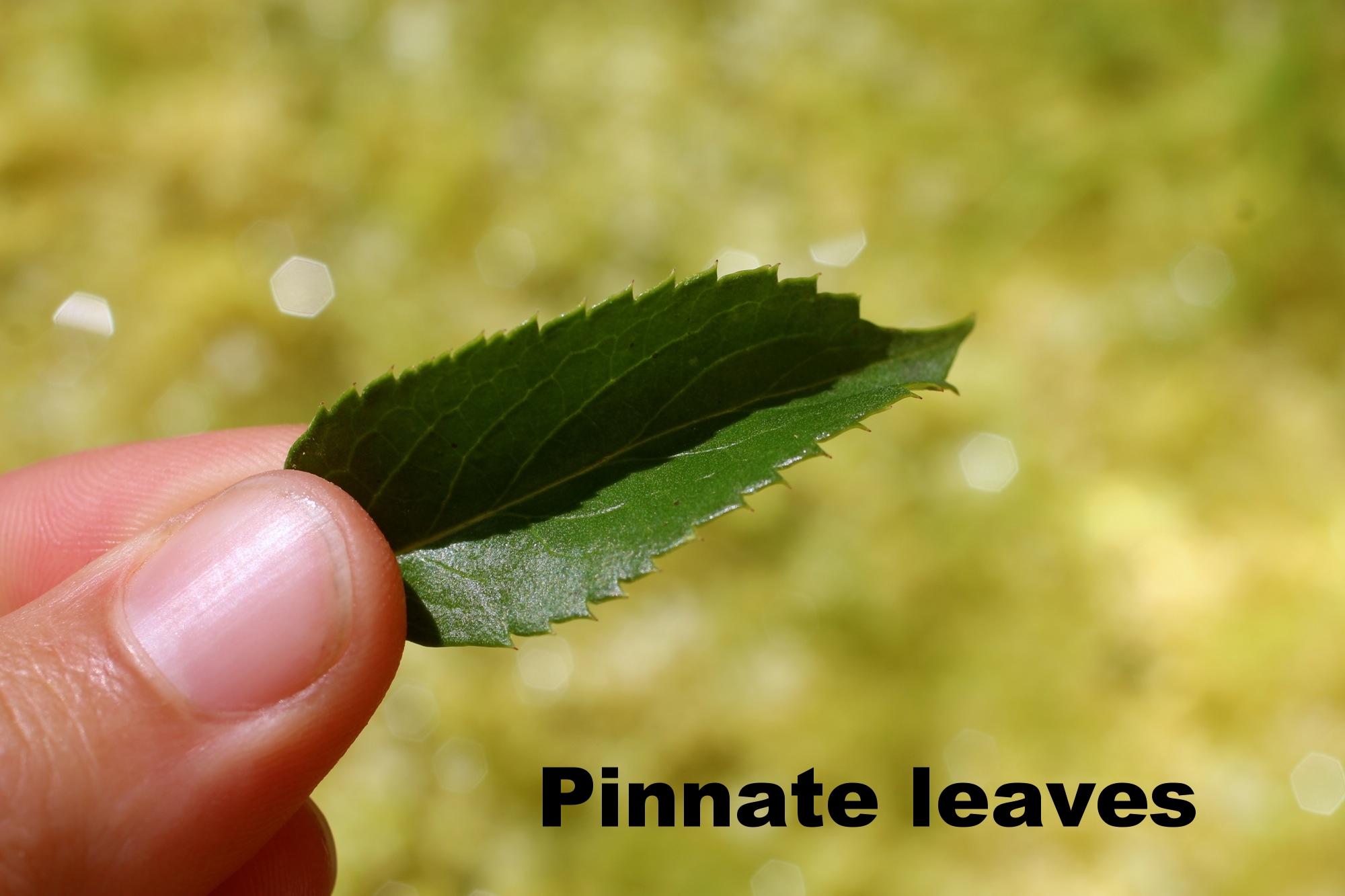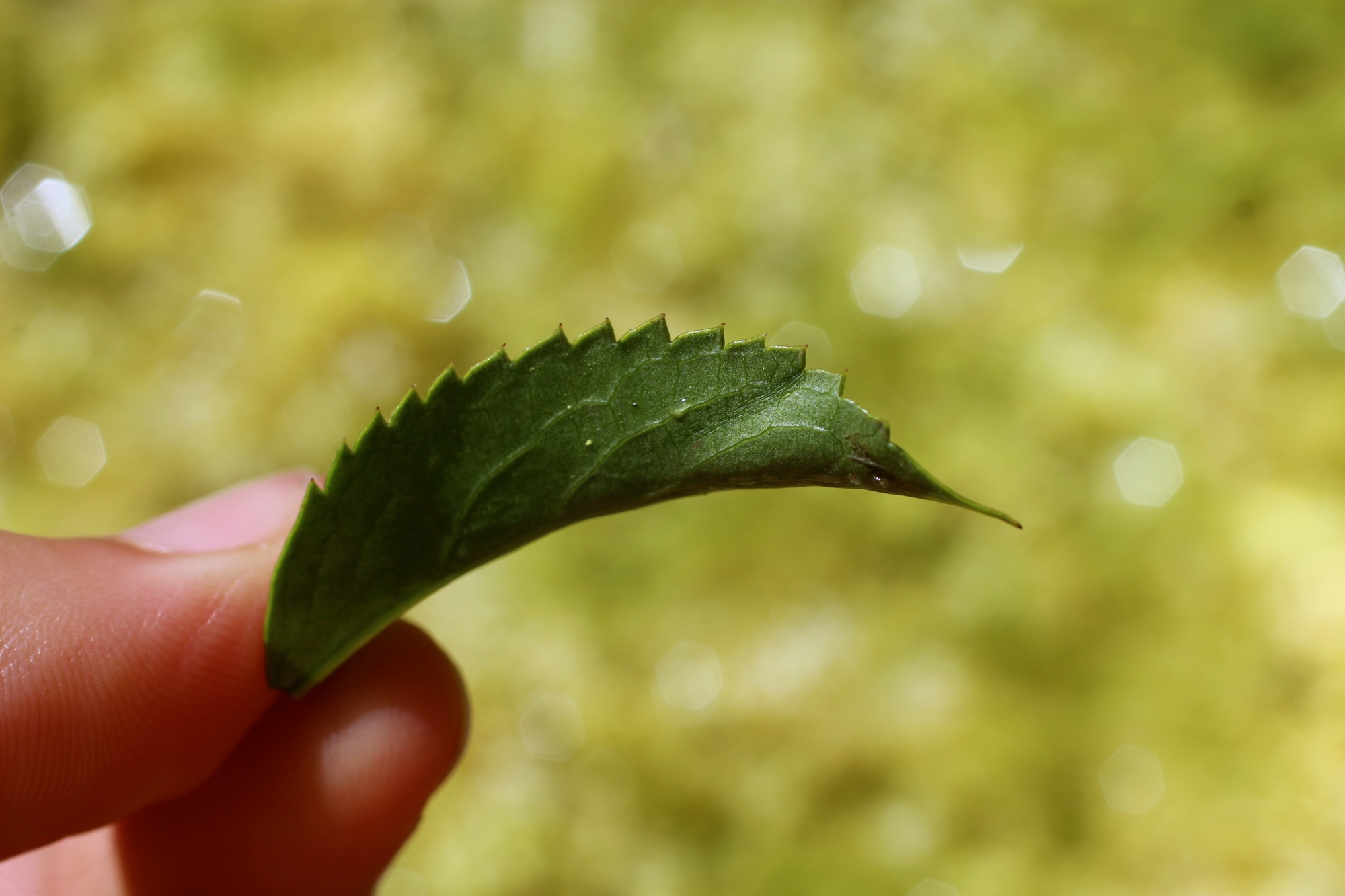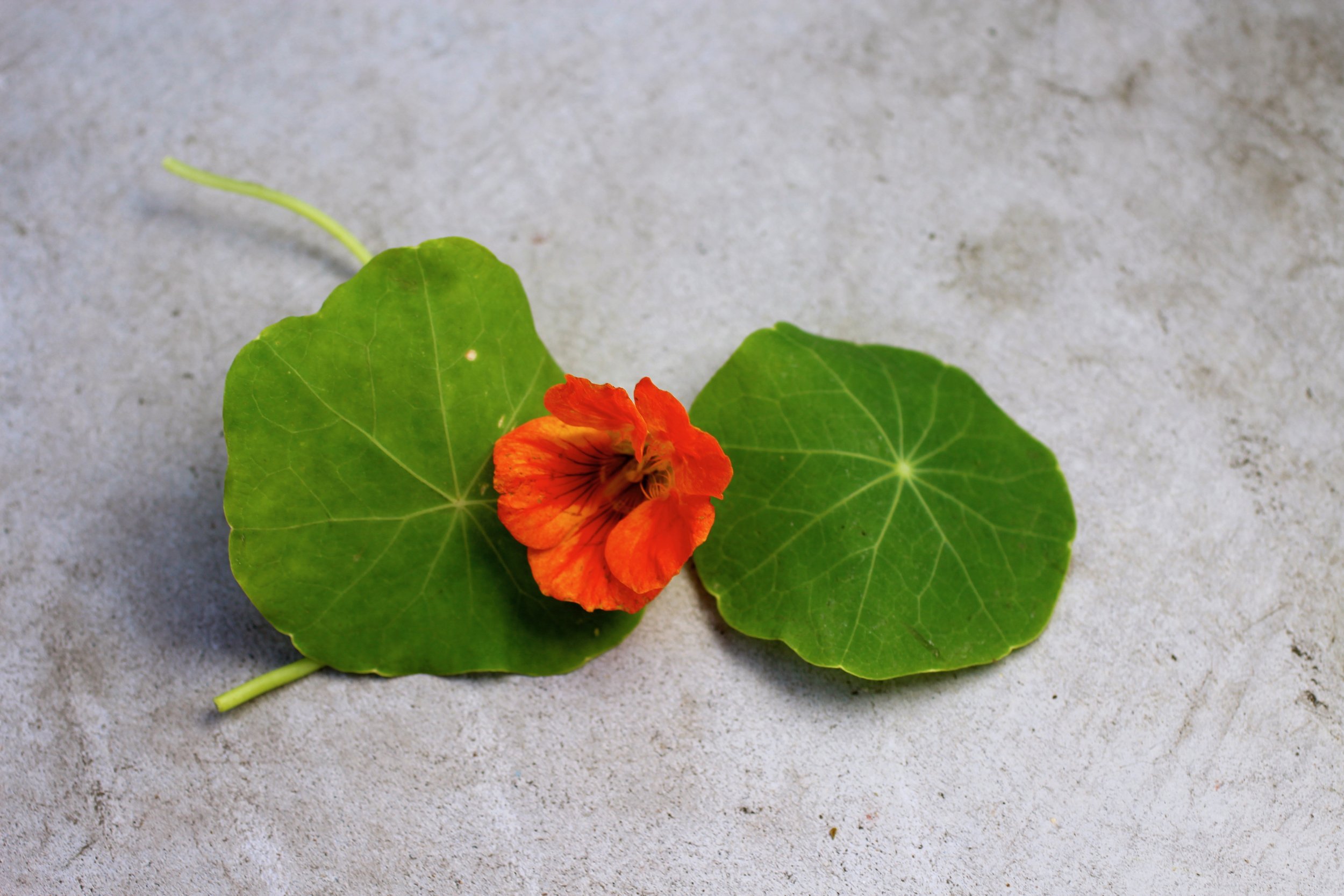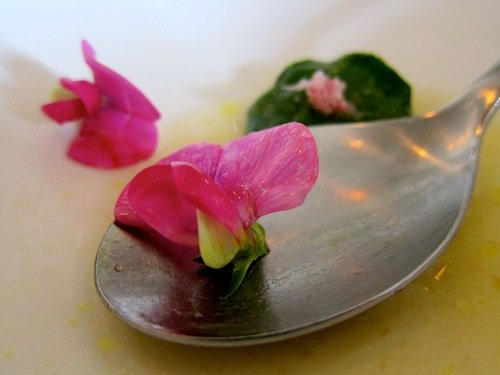Nasturtium: So much more than a (pervasive) flower
Nasturtium mezcal margaritas: An impromptu preparation for an outdoor happy hour.
Nasturtium (Tropaeolum majus) grows everywhere - everywhere - in the Bay Area as well as many other parts of the country. It flourishes in parks, gardens, and along sidewalks pretty much year-round, except when it gets very cold or very dry. The plant is sprawling and iconic - even if you do not immediately know what I am talking about, you have probably seen nasturtium many times or perhaps tasted the flowers in a salad mix from the farmers' market or restaurant. The flowers are bright orange, yellow, or sometimes red with five petals on a single stem and leaves that look similar to lily pads, but thinner. The plant comes by way of South America and my guess is that it was transported here because it is so visually appealing, grows easily, and has a tasty, unique flavor.
What I love about the nasturtium plant is that with its mustard/radish/wasabi-like flavor and cheerfully spunky appearance, it is very approachable for even the biggest wild food skeptic (as long as said skeptic doesn't have an aversion to pungency). However, when you dig a little deeper, there are so many more possibilities than just using the fresh flower as a garnish or in salads. The leaves have a slightly thick, viscous quality to them, similar to okra, but I the sharp flavor cuts this a bit and the viscosity is helpful when you want to thicken a dish, such as a risotto or stew.
Freshly picked nasturtium seed pods
Sweet pea flowers in foreground, baby nasturtium leaves in background wrapping shrimp (wish I got a better photo of the nasturtium!), rhubarb broth.
My first close and consistent experience with nasturtium was when I worked in a restaurant that used the flower to garnish mezza platters (hummus, tapenade, etc.). Being me, I would often grab a bunch of the leftover stems and take a big bite for a peppery "jolt" to keep me going throughout the night. On the other (more calculated) end of the spectrum, in the past few years I have been using the flowers in cocktails and experimenting with the leaves (either fresh in a salad or lightly cooked) and seed pods (pickling them is amazing - check out this recipe for California capers) Baby nasturtium flowers even made their way to the Noma menu when I had the opportunity to eat there and nasturtium pesto is a regular staple on the ForageSF Wild Kitchen dinners, or at least it was the few times I helped out.
The Regal Elderflower
A fragrant pagan declaration of summer.

Processing elderflower for fermented cordial with the Nordic Food Lab crew. We were all covered in pollen after this flower-plucking session! Species of elder likely Sambucus nigra.
There's something truly special about the elder, or Sambucus, plant and I've always felt a special connection to it. Not only does it proclaim to the world that summer is approaching and provide culinary and medicinal benefits, but it also somehow manages to be both utterly wild and elegantly refined at the same time. The plant is likely called "elder" because it is so old that you can find varieties of it around the world. It's no surprise then that so many cultures have different symbolisms and uses attached to Sambucus including (but definitely not limited to) the below.
Symbolism
Shakespeare: Grief (the "stinking elder"), yet also beloved
Pagan: Superstitions around cutting it back or burning it (will cause bad luck)
Danish: The elder Mother or "vegetation goddess" lives in the tree (HyldeMoer) - you need to ask her permission before cutting it.
Sicilians: Kill serpents and drive away robbers
Serbians: Good luck if used during the wedding ceremony
England: Hold in pocket to ward off lightning, cross above animals to ward off evil
Supposed Medicinal Uses (Note: I have not looked into the scientific evidence supporting any of the below, but rather wanted to show the breadth of supposed medicinal uses)
Bark: Purgative, emetic, diuretic, asthma (not consumed anymore due to toxins)
Leaves: Bruises/sprains, wound healing, expectorant, diuretic (not consumed anymore due to toxins)
Flowers: Tea for swollen sinuses, colds, flu, diabetes, constipation, rheumatism, influenza, relaxant, complexion, blood purification
Berries: Hot wine for influenza, asthma, juice for antiviral/antibacterial
Food
Flowers: Cordial (St.Germain is an elderflower liqueur), desserts, jelly, shrub, fritters
Berries: Cordial, wine, syrup, desserts, jelly, etc.


The elder tree can grow up to 25 feet tall and has reddish bark and pinnate leaves opposite of each other. The tiny star-shaped flowers, which bloom in May/June, are a yellowish white/cream color and grow in clusters. The elder plant that you will find in Northern California (and most of the Western United States) is Sambucus cerulea, also known as blue elder for it's dark blue berries. The berries can be found later in the summer, are a bluish/black often with a whitish powder sheen and also grow in large clusters.
ELDERFLOWER AND ELDERBERRIES MUST BE PROCESSED BEFORE CONSUMING. Don't just go around grabbing handfuls and consuming them raw like you would blackberries! However, the berries may be fine in small amounts and both berries and flowers are definitely safe after cooking or drying. When using the flowers, such as in this elderflower chive fritter recipe, it's best to remove as much of the stem as possible, but some stem is fine if cooked.

Notice tiny star-shaped flowers. This Sambucus nigra from Europe has larger clusters and whiter flowers than the Sambucus cerula of California.
My first experience with elderflower (other than St.Germain) was during my stint as a visiting researcher at the Nordic Food Lab in Denmark. We spent a morning riding all over Copenhagen to forage huge clusters of elderflowers and stuffing them into sacks before plucking the flowers to be used in a fermented cordial. I still fondly remember being covered in pollen afterward while enjoying a well-deserved chocolate rye roll. Denmark is really a magical place and elderflowers unsurprisingly about there. The elderflowers you find in Denmark are most likely to be Sambucus nigra rather than the Sambucus cerulea that is found in California and are a bit larger and whiter, but both have the same beautiful fragrance and uses. As I left Denmark before the berries came out and just recently found a spot for elder in California, I have yet to experiment with the berries, but am greatly looking forward to doing so this summer!

Yellower, yet still star-shaped, flowers of the Sambucus cerula foraged from Tilden Park in Berkeley, CA.







